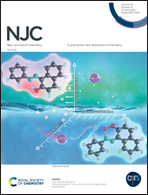Rational synthesis of macroporous nanocarbon with phosphorus-doping from pitch for high-rate sodium ion batteries†
Abstract
The cost-effectiveness and abundance of sodium make sodium-ion batteries a compelling alternative to lithium-ion batteries. The hurdle is adapting the widely used graphite anodes in lithium-ion batteries for use in sodium-ion battery anodes, given the larger size of sodium. Macroporous carbon materials emerge as promising anode candidates for sodium-ion batteries due to their favorable electrolyte penetration and structural stability. In this research, an economical and readily available high-temperature coal pitch serves as the precursor for the anode material. Sodium chloride acts as the templating agent, while phosphorus atoms are intentionally introduced through disodium hydrogen phosphate to induce defects. The phosphorus-doped macroporous carbon demonstrates noteworthy specific capacity and cycling stability, even under high current density conditions, making it a viable choice for application in sodium-ion batteries: after 1000 cycles at a current density of 5 A g−1, the reversible specific capacity still reaches 135 mA h g−1 with a capacity retention rate of 94.4%; after increasing the current density to 10 A g−1, the reversible specific capacity still exceeds 100 mA h g−1 after 3500 cycles.



 Please wait while we load your content...
Please wait while we load your content...